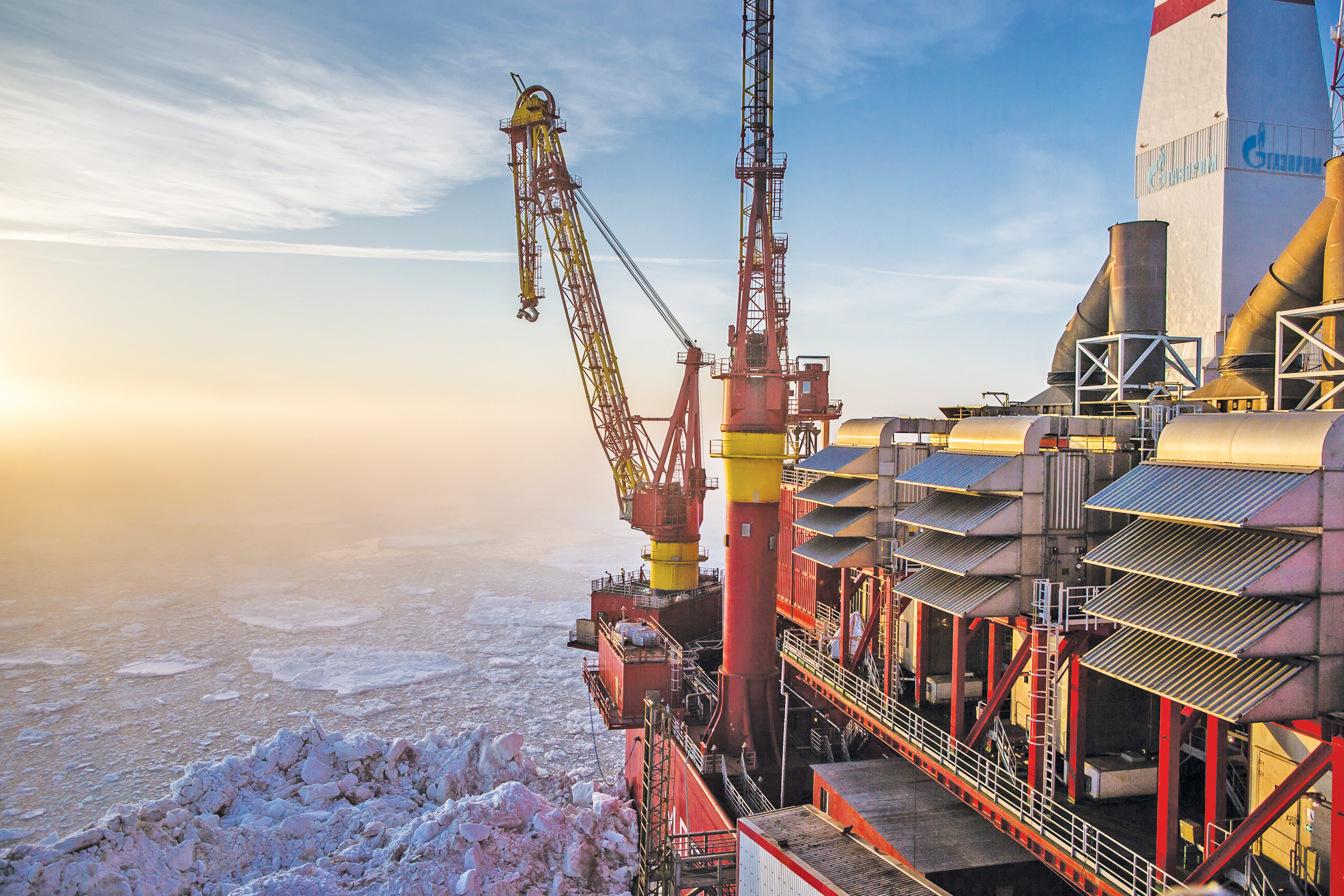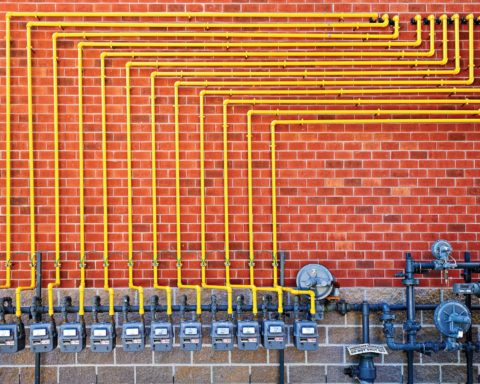Pavel Sorokin – deputy Minister of Energy of Russia
Over the past decade, the global energy market has undergone dramatic changes. First of all, it ceased to be exclusively petroleum-based – extensive trade in liquefied natural gas (LNG) started, whose production, and most importantly – trading, has significantly expanded. Today, LNG turnover has exceeded 300 mln tons per year.
Until recently, the international gas market consisted of disjointed regional platforms where mainly piped gas was traded. Now, large tonnage LNG sales are already starting to act as a system integrator of the gas markets into a single global trading space.
With the growth in trading volume and erasing of borders on the LNG market, the «rules of the game» are gradually being revised: it’s becoming more flexible and hundreds of new players with strong competencies are emerging, including those from the oil sector.
«Playing» on this market is becoming increasingly difficult. High price volatility has long become one of its hallmarks, inhibiting solely the growth of traders with modest capital. In fact, on the supply side, dozens of new projects are being discussed on the market, primarily within Australia, the USA and Russia, on which companies have yet to make an investment decision.
Large tonnage LNG sales are starting to act as a system integrator of the gas markets into a single global trading space
Until recently, the international gas market consisted of disjointed regional platforms where mainly piped gas was traded. Now, large tonnage LNG sales are already starting to act as a system integrator of the gas markets into a single global trading space.
With the growth in trading volume and erasing of borders on the LNG market, the «rules of the game» are gradually being revised: it’s becoming more flexible and hundreds of new players with strong competencies are emerging, including those from the oil sector.
«Playing» on this market is becoming increasingly difficult. High price volatility has long become one of its hallmarks, inhibiting solely the growth of traders with modest capital. In fact, on the supply side, dozens of new projects are being discussed on the market, primarily within Australia, the USA and Russia, on which companies have yet to make an investment decision.
No supply shortage should be expected on this market over the mid-term. The LNG overproduction that the expert community was so worried about in the early 2010s didn’t happen.
On the contrary, most of the uncertainty is coming from the demand side. Strangely enough, the traditional market of Europe, rather than the young, growing economy of China, could emerge as the locomotive of demand here. Demand for imported gas in Europe will steadily grow due to the increasing decline in its own production: the English and Norwegian sectors of the North Sea are requiring more and more investments to maintain the «shelf» of production, while the only major project in the region, the Dutch Groningen, will soon be legislatively closed for security reasons. In 2018, Europe’s decline in gas production reached 3.6%. According to Wood Mackenzie’s forecast, over the long-term, gas production in Europe will only decline. By 2040, it will decrease by 65% compared to 2018 – from 99.4 bcm to 34.8 bcm.

Source: Wood Mackenzie (2018)
The EU’s current decarbonisation policy and its desire to move towards a low-carbon economy as soon as possible are creating the prerequisites for expanding the presence of environmentally-friendly energy sources in this market. But, despite the development of such renewable energy sources, Europe is rapidly losing the competitiveness of its economy. Therefore, it seems likely that, in the future, natural-gas power generation, emitting half of the greenhouse-gas emissions of coal generation at a price more competitive than renewable energy, will become the locomotive of most of the region’s leading economies. According to BP experts, the share of gas in the fuel balance of EU countries will grow from 19.5% in 2018 to 20.4% by 2040.
Gas imports to EU stood at the level of 281.2 bcm or 53.8%
of demand. Given its own declining production, the European market’s dependence on gas imports is expected to increase to 387.2 bcm by 2040 or 78.3% of demand
There is a real race underway to «cover» this window of opportunity. As of 2018, with its own production of 99.4 bcm, natural gas imports to Europe stood at the level of 281.2 bcm, which is 53.8% of total demand. Given its own declining production, the European market’s dependence on gas imports is expected to increase to 387.2 bcm by 2040, accounting for 78.3% of total gas demand.
The current leader in this race is Russia, which boasts the largest proven gas reserves in the world (more than 35 trln cubic meters, or about 18% of the world’s total) and the most convenient approach to European markets in terms of logistics. Despite the increasing competition in the global gas markets, especially from new producers of liquefied natural gas, the dynamics of Russian pipeline gas supplies to Europe is only growing. At the end of 2018, the share of Russian gas in the European Union market amounted to 36.7%.
As a result, covering the «window» of demand in continental Europe is becoming a sphere of competition between Russian pipeline gas and LNG. According to the forecasts of many prominent experts, IHS Markit in particular, the dominance of Russian pipeline gas on the European markets will continue for at least the next 10 years.
However, it’s no time to relax. It was just in 2018 that LNG and Russian piped gas faced competition in Europe for the first time. Curiously, the growth of LNG supplies was to a great extent provided by a Russian manufacturer as well, Yamal LNG – 6.6 bcm. About 80% of the LNG was sent to Belgium, France, the Netherlands and the UK – the very countries buying Russian piped gas.
This fact can be interpreted in different ways, but it is becoming crystal clear that the changes on Europe’s traditional gas market are becoming irreversible. Competition is growing, new players are coming – both from Russia and from a number of large producing countries from Africa and from the USA. Their advantages are emerging as pricing flexibility, contractual terms, and ever-increasing, absolutely non-market, political pressure. In this regard, it will be interesting to see whether the more traditional and, it would seem, somewhat less agile, pipeline gas will be able to maintain its leading position and not become a burden for the suppliers themselves.
The share of Russian gas in the EU market amounted to 36,7%
LNG Hopes
Today, LNG continues to be the fastest-growing source of gas supplies and the main driver of demand for it. In 2018, the world’s liquefied gas supplies reached 319 mln tons , which is 8.1% more than the previous year. According to Shell analysts, this trend will continue in the future as well. This year, LNG supplies will grow by 13% to 360 mln tons, in 2020 – by at least 7% to 385 mln tons, and up to 580 mln tons by 2030.
Such forecasts are rooted in a number of economic and technological considerations at once.
First, LNG contract structures are becoming more flexible. The incentives for such a structural drift vary widely: from new consumers entering the market to the desire of buyers – especially European ones – to diversify suppliers in order to increase reliability and, of course, the profitability of supplies.
At the same time, the percentage of contracts leaving the choice of final destination up to the LNG buyer is growing. It is the arrangement upon which LNG supply contracts from the USA are built. As a result, the market’s trading component is only growing – along with resales of LNG. The contracts themselves are becoming longer-term. From 2017 to 2018, their average effective term more than doubled – from 6 years to 13 years. The total volume of contracts increased by a factor of 2.7.
The increase in contract length, in turn, is supporting the commissioning of new LNG capacities, which means a reduction in average construction costs along the chain. Over the past 8 years, they have been almost halved (from $2,000/ton in 2010–2014 to $600–1,400/ton in 2014–2018).
As a result, the number of LNG projects will only grow. According to Oxford Energy forecasts, over the next two years, in aggregate, investment decisions will be made on 28 projects with a total capacity of 302 mln tons, of which 204 mln tons represent new projects, while the remainder reflects the expansion of existing LNG plants. Most of them will be implemented within the USA and Canada (about 190 mln tons), as well as in Qatar (33.4 mln tons), Mozambique (28 mln tons) and Russia (25 mln tons). By comparison, however, in 2018, investment decisions on projects were made for just 21.5 mln tons.
Since the European markets are considered some of the main sales markets, growing US ambitions are posing serious risks for Russia’s position on this market. At present, associated gas production at US shale formations is growing faster than pipeline capacity and demand. According to IHS forecasts, by 2030, LNG exports from North America will increase significantly – from the current 21 mln tons to 96 mln tons.
Finally, in addition to the US factor and the fundamental change in the LNG market model, the growth rate of prices in the premium markets of Asia is also affecting the supply routes of liquefied gas.
All of the aforementioned factors are having a huge impact on the change in the energy market in many regions of the world – especially in Europe, which is striving towards the constant diversification of its supplies, including reducing its «dependence» on Russia. This vector was particularly strengthened after problems with pumping Russian natural gas through the territory of Ukraine in 2006 and 2009. To that end, European countries are actively building more and more regasification terminals. As of 2018, they have already reached 173 mln tons. However, given the total volume of LNG imports by Europe in 2018, in the amount of 50 mln tons, as well as the growth rate of LNG demand (in 2018 – only about 7%), the regasification terminals will suffer losses for some time to come. Their average loading does not yet exceed 30%.

Source: Wood Mackenzie (2018)
Liquefy and Pay
Meanwhile, the diversification of supplies by means of LNG has been rather difficult. This becomes apparent when looking at the breakdown of major LNG suppliers to Europe. From total LNG imports to Europe in the amount of 50 mln tons, Russia supplied 4.9 mln tons or almost 10% of total volume. Qatar comes in at first place (16.9 mln tons or 33.7% of total exports to Europe), followed by Nigeria (9.5 mln tons or 19.0%) and Algeria (9.4 mln tons or 18.8%). LNG imports from the USA have so far not exceeded 2.7 mln tons, having increased by only 0.3 mln tons for the year (Vygon Consalt data).
But despite everything, market experts remain optimistic about the prospects for 2019, predicting an increase in LNG supplies to Europe from 15.6–23.5 mln tons (Shell) to growth of almost 1.5 times to 25 mln tons (Wood Mackenzie). Such forecasts of the arrival of significant volumes of LNG are based on the assumption that the premium nature of the European market will remain in 2019. Over the first three months of this year, European countries have already imported 21.5 mln tons of LNG. It is noteworthy that in the same period (January-March), Gazprom’s gas exports to Europe dropped by 0.4% to 61.5 bcm, although export earnings increased by 10.7% to $14.1 bln compared to the same period in 2018.
Thus, today’s competitive niche occupied by Russian pipeline gas in EU gas imports, at 46%, is regarded by some EU countries, if not yet as a threat to Europe’s energy security, then at least as a reason for diversification. Wood Mackenzie experts expect that the share of LNG in total gas supplies to Europe will grow smoothly against pipeline deliveries, from 12.9% in 2018 to 29% in 2040. According to IHS experts, that very share of pipeline gas will suffer, in anticipation that in 2018–2030, supplies from Russia will fall to 143 bcm.

At the moment, however, current export figures indicate the opposite. The popularity of Russian pipeline gas is only growing. Last year, Gazprom established a new export record of more than 200 bcm. Only the Nord Stream gas pipeline in 2018 supplied gas volumes exceeding its design annual capacity: 58.8 versus 55 bln cub. m per annum.
Today, gas-supply capacities to Europe, taking into account Turkey, exceed 250 bcm; taking into account the commissioning of Nord Stream‑2 (55 bcm) and the two branches of Turkish Stream (31.5 bcm), Russia’s export opportunities are well over 300 bcm.
The chance that such huge pipeline volumes will remain underloaded, given the growth of imports by European countries, is vanishing. Converting the share of imports to the share of real consumption, it turns out that Russia, given the export of its LNG, took about 38% of the EU market. At the same time, the low cost of gas production in Russia makes it a long-term price leader in the region. This ought to be obvious if we compare Gazprom’s record-breaking export of gas to Europe and the drop in pipeline-gas supplies of such major players in the European market as Algeria. Yes, it is indisputable that at the beginning of 2019, Gazprom’s gas exports to Europe decreased compared to last year, but this is rather a consequence of a combination of warm weather in Europe and a rapid decline in the price spread for LNG in Asia and Europe, caused mainly by a temporary slowdown in demand for LNG in China.
First of all, one of the main advantages of Russian gas is its geography and huge reserves of 35 trln cubic meters, while the nearest competitors of Russia in the export markets of Europe and Asia – the United States and Australia – possess only 8.7 trln cubic meters and 3.6 trln cubic meters, respectively. In addition, Russia’s convenient location between Europe and Asia allows our gas – both in liquid and gaseous form – to be profitable at current prices and to win competition against LNG from the USA and Australia.
According to Gazprom representatives, in 2018, average prices for Russian gas in the EU amounted to at least $248/m3 or $6.92/mln BTUs. Given that American LNG is most often traded by international traders at the gas-exchange price (NBP), the average price of which was $7.7/mln BTUs, then American LNG, tied to the spot price of gas, was at least 11% more expensive than Russian gas. If regasification costs (estimated at $0.5/mln BTUs) were to be added here, then LNG would already be 14–18% more expensive.

Moreover, there are other conditions for the further expansion of demand for Russian gas in Europe. For example, to maintain competition, Gazprom is trying new pricing options by selling its gas at auctions. In addition, the current decarbonisation process, which is gradually reducing the use of non-environmentally-friendly fuels and increasing gas consumption, could promote greater demand.
LNG exports to European countries represent a promising, albeit alternate, route for Russian gas supplies to the region’s markets, which have not yet been provided with sufficient pipeline capacities for pumping regasified gas to consumers. Such gas pipelines supply just a quarter of the total capacities of LNG onshore receiving terminals. With the ongoing gradual expansion of the number of terminals with access to large gas pipelines, the demand for LNG – and primarily Russian LNG – will also increase. Today, there are only two LNG plants operating in Russia – Sakhalin’s Sakhalin‑2 and Yamal LNG – but their number will grow. At the Eastern Economic Forum, Novatek and several Japanese companies signed a protocol on the adoption of a final investment decision on the Arctic LNG‑2 project, which envisions the construction of three LNG production lines with a capacity of 6.6 mln tons per year each, for a total of 19.8 mln tons. The number of such projects in the north, on the Yamal and Gyda Peninsulas, is limited only by the resource base, whose huge reserves are in the vicinity of 38 trln cubic meters. In this Arctic direction, Russian gas, but in liquefied form, is also helped by the relatively-short transportation leg to European and Asian consumers.
As part of the country’s development of its Arctic potential, the Russian president emphasized the aim of transforming the Northern Sea Route into a global, competitive logistics system playing a crucial strategic role in the development of Russia’s Arctic zone. By 2024, freight traffic along the Northern Sea Route should reach 80 mln tons per year. In this, Yamal LNG will play a crucial role.
In general, the country’s resource base will allow Russia to claim an LNG production level of 100–140 mln tons per year by 2035 and a global market share of up to 20%. This is especially important in view of forecasts envisioning the doubling of demand for LNG by 2035 to 600 mln tons and the creation of a free price niche of about 200 mln tons of LNG per year due to the lack of a sufficient number of LNG projects to date. At the same time, the recipients of deliveries of Russian LNG and Russian pipeline gas will be completely different, which will avoid unhealthy competition and create conditions for the further growth of exports of both liquefied and pipeline gas from Russia.







